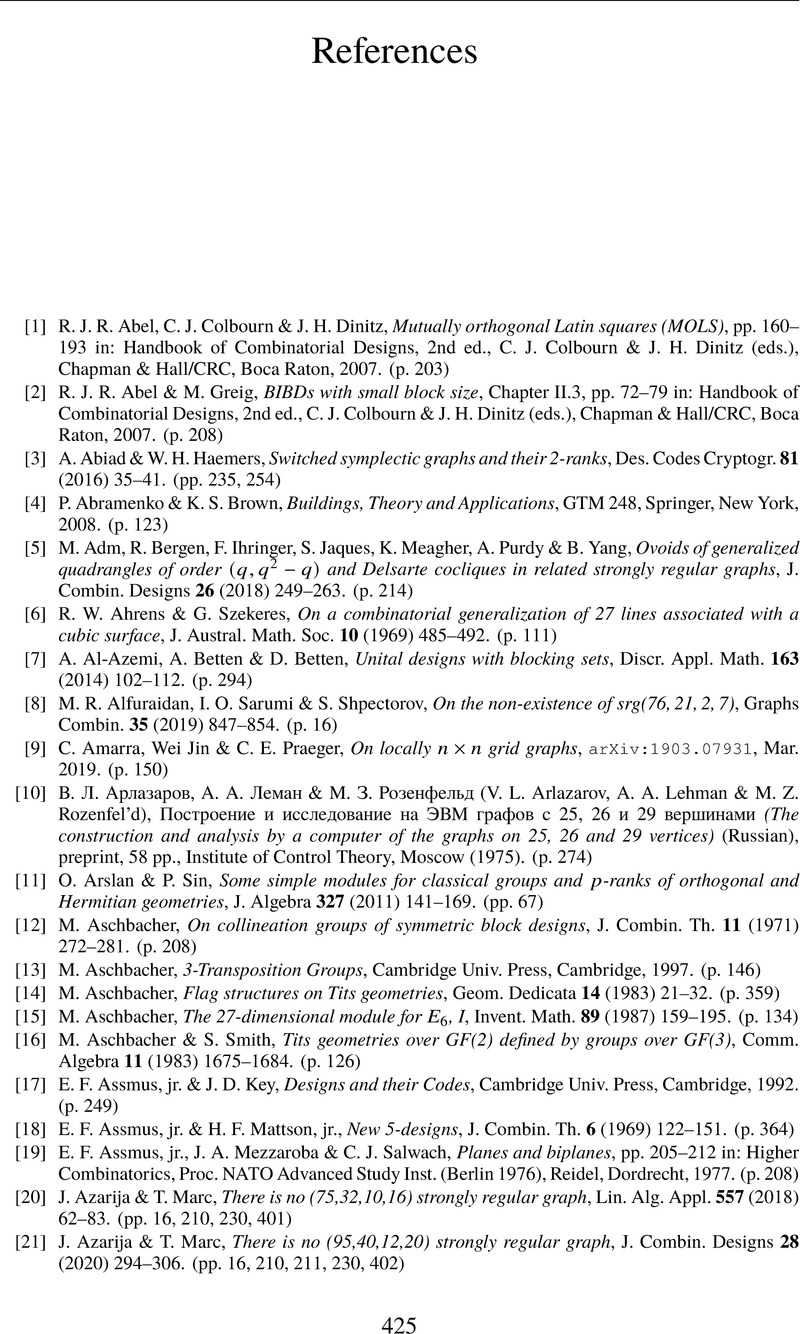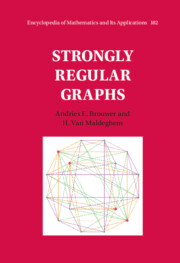Book contents
- Frontmatter
- Contents
- Preface
- 1 Graphs
- 2 Polar spaces
- 3 Graphs related to polar spaces
- 4 Buildings
- 5 Fischer spaces
- 6 Golay codes,Witt designs, and Leech lattice
- 7 Cyclotomic constructions
- 8 Combinatorial constructions
- 9 p-Ranks
- 10 Individual graph descriptions
- 11 Classification of rank 3 graphs
- 12 Parameter table
- References
- Parameter Index
- Author Index
- Subject Index
- References
References
Published online by Cambridge University Press: 06 January 2022
- Frontmatter
- Contents
- Preface
- 1 Graphs
- 2 Polar spaces
- 3 Graphs related to polar spaces
- 4 Buildings
- 5 Fischer spaces
- 6 Golay codes,Witt designs, and Leech lattice
- 7 Cyclotomic constructions
- 8 Combinatorial constructions
- 9 p-Ranks
- 10 Individual graph descriptions
- 11 Classification of rank 3 graphs
- 12 Parameter table
- References
- Parameter Index
- Author Index
- Subject Index
- References
Summary

- Type
- Chapter
- Information
- Strongly Regular Graphs , pp. 425 - 450Publisher: Cambridge University PressPrint publication year: 2022



